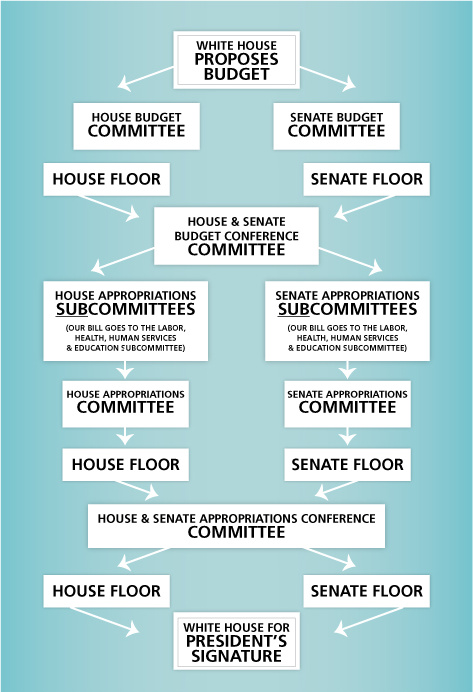Each year, Congress sets spending priorities and allocates taxpayer dollars to fund specific programs.
This is called the budget and appropriations process.
BRIEF DESCRIPTION OF THE PROCESS
Step 1 The Budget Process
The budget process determines how much money Congress will spend each year. Since Congress is not required to pass a balanced budget, the U.S. House and U.S. Senate work to reach an agreement on how much money they will spend.
The budget resolution goes through the House and Senate budget committees and then is voted on by all the Members. If the House and Senate each pass bills recommending that different amounts of money be spent (which typically happens), then House and Senate "negotiators" come together in a "conference committee" to reach agreement on a negotiated amount.
Interestingly, Congress is not required to reach an agreement on a budget amount, and in some years they fail to do so. They are only required to complete step two (appropriations) in the process. The budget resolution also does not go to the president for approval.
Step 2 The Appropriations Process
Once the budget process is completed (or even if it is not), the U.S. House and U.S. Senate begin the process of determining the specifics of how the money will be spent. How much will be spent on education? How much on health care? How much on transportation? This is called the appropriations process since Congress is "appropriating" money to different departments and programs.
Spending decisions (i.e. the appropriations bill) start in subcommittee and work their way through the process until it reaches the final step when all the Members get a chance to vote on it.
Once again, if the House and Senate have different bills, they come together in a "conference committee" to negotiate an agreement.
Once both parties reach an agreement, the final bill is forwarded to the White House for the President's signature.
